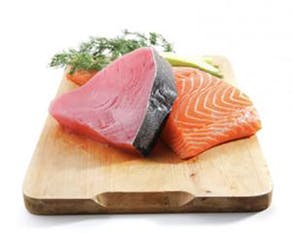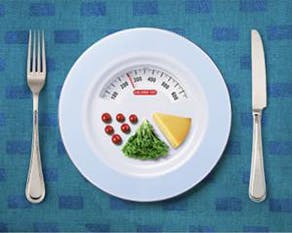How to Fight Middle-Age Weight Gain
WOMEN'S HEALTH
10.21.2014
As if weight control wasn't hard enough for women, getting older makes it even more difficult.
.jpg?auto=format)
Calorie needs decrease with time, and your weight control plan should evolve to reflect each stage of life. You can forget about drastic calorie reduction and excessive physical activity to shed pounds, however. Small, positive lifestyle changes matter most for preventing and reversing middle-life weight gain.
For most women, achieving and maintaining a healthy weight is not down to any single decision, but the result of a series of choices throughout the day, like opting for cereal and low-fat milk instead of an oversized bagel smeared with cream cheese, snacking on fruit instead of candy, and avoiding excessive added fat.
The trick is to eat, and exercise, smarter as you get older. With the holiday season on the horizon, it won't hurt to start today to prevent pounds from creeping on. Here's how.
Check your BMI. BMI stand for Body Mass Index, a measure of body fat based on height and weight that applies to adults. A BMI within the healthy range is linked to a lower risk for many health conditions including type 2 diabetes, heart disease, and breast cancer. If your BMI does not fall within the healthy range, you may need to take action.
Curb calories, not food. Simple swaps slash calories without sacrificing eating satisfaction, making weight control easier in the long run. Substitute a no-added-sugar cereal for its sugary counterpart and save about 50 calories a serving. Choose 1% low-fat milk instead of 2% and conserve 30 calories per cup. Opt for 2 slices of thin crust pizza over stuffed crust to save about 400 calories.
Discourage portion distortion. It's easy to serve yourself more food than you need, and large restaurant portions can also take a toll on your waistline. When you're on a tight calorie budget, just a few missteps can make a big difference. You may need to weigh and measure food for a few days to get a handle on servings.
Cover your bases. When you cut calories, you cut nutrition. Lower-calorie diets may be deficient in several nutrients, including calcium and vitamin D. Take a daily calcium and vitamin D supplement and a multivitamin as insurance against nutrient shortfalls.
Shake up your exercise routine. You may take a brisk walk for 30 minutes, five days a week. Congrats! You're doing what the 2008 Physical Activity Guidelines for Americans recommends – almost. Walking is beneficial, but experts recommend at least two weekly sessions of resistance training. Working out with weights, elastic bands, or your own body weight preserves and builds muscle, which revs up your metabolism all day long.
Balance your energy. If you're like most people, weight loss is one of your main reasons for exercising. Physical activity burns calories, but maybe not as much as you think. Overestimating calories burned by working out is a common pitfall that can lead to frustration. Click here to see how many calories you burn doing 30 minutes of a long list of physical activities.
Watch out for weekends. Weekends come around every 6 days. Taking Saturdays and Sundays off from healthy eating can easily erase the achievements you make during the week. Indulge a little on weekends if you like, but don't waste calories on foods or drinks you don't absolutely love. Schedule exercise for one or both weekend days to offset some extra calories.
Image credits: Dragon Images/Shutterstock.com
Recommended Articles
The 5 Best Foods That Will Help Supercharge Your Brain
Amidst our busy schedule, it's important to retain our focus and memory. Resting alone is not...
Iron deficiency is a lot more common than you would think. A recent survey by SATA CommHealth(i...
Mars vs Venus: Understanding the His and Hers of Nutritional Needs
Mars vs Venus: Understanding the His and Hers of Nutritional Gaps Although their DNAs are...






